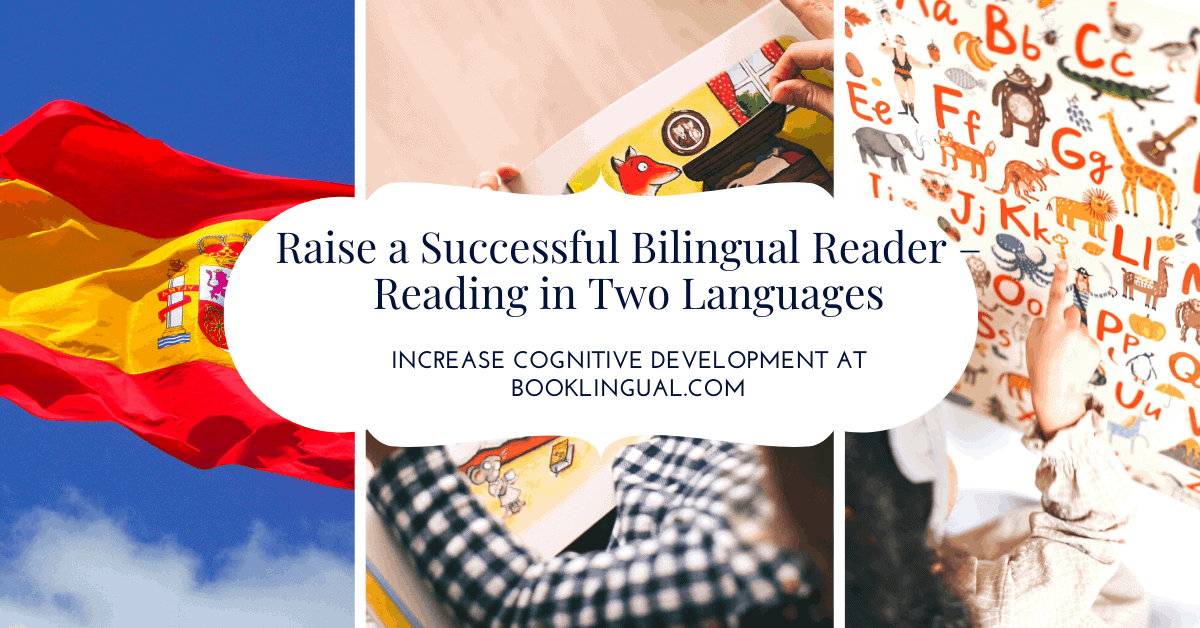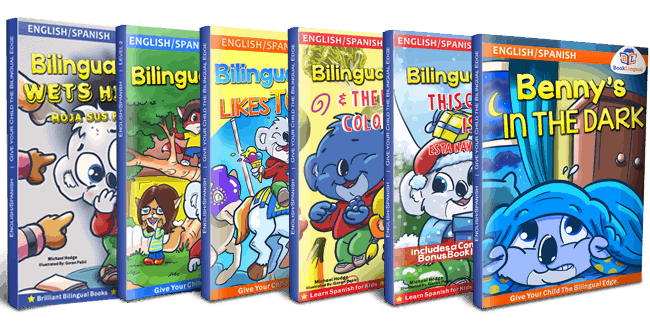Want to raise a successful bilingual reader that reads in two languages? Your child can read in two languages! Below are ten simple, yet powerful steps to take to develop your child into a rapid-reader (even if they cannot read yet). These steps will also help your child learn to read in both his/her primary and secondary languages. Best of all, these steps are proven to work and are simple to execute.
What if my child is not of reading-age yet? These same tips apply! But, instead, you are reading books out loud to your child, and they are gaining the benefit of learning a language at such a young age!
1. Your child must see YOU reading books.
This is certainly most important, and definitely unexpected, but completely necessary. Before you can take the other steps to help; you must first lead by example. Your child is heavily influenced by your behaviors and will mimic what you do. Of course, this is stronger at a young age – such as the age of reading development. Make sure you are anxiously reading a book at least once a week. Do it while they are watching a cartoon. While they are doing homework. Do it as long as your child SEES that you are reading, and it appears important, they will be more likely to want to read as well.
2. Make reading fun, enjoyable, and exciting.
Reading competes with video games, television, computers, smartphones, and even playing outside. Many parents turn reading into a chore at an early age. This makes it more difficult as they feel pressure to make their child succeed. “I HAVE TO read him a book every night, or he will fall behind!” is a common mindset. Use puppets, act scenes out, or have a ‘go-to’ reading spot. Find the balance of rewards and the excitement of just reading. Give them a weekly award right after the completion of a book. Tie reading into fun, excitement, and pleasure, and see the motivation rise.
3. Let your child choose the book.
Go to the local library every week and have your child choose an appropriate reading-level book. But they are IN CONTROL of their choice. Again, a small reward for motivation never hurts. Soon after, your child will pair these activities as a positive experience. As devices become more and more a part of our everyday lives, have them browse the eBook store on your tablet or device; choosing what they want.
4. Reward your child with books and similar prizes.
Some parents give their child a monetary reward for good grades on their report card. This is not heavily recommended early on as it ties behavior to money; when the behavior should be individually accounted for. A better idea would be to take your child to a bookstore after each report card. How about their favorite book for every good grade they get? This again trains your child’s mind to the idea that hard work-reward-happiness-choice-control comes with educational attainment. Not only is your child making good grades, but excited to get to READ new books as the reward. Is this something you have ever considered?
5. Develop a Bilingual Language Action Plan.
Not as hard as it sounds, it can be done in the morning over coffee. You (and any other family members involved, such as your spouse) must sit down and discuss how your child will be immersed in both languages (or more). The most common and highly effective method is called: 1 parent, 1 language. This method is done by having one parent speaking only Spanish. Whereas the other parent speaks only English. There must be complete consistency for this to be successful. This takes a great deal of commitment and communication from both parents. Some creativity can be utilized by adding different methods. An example can be Spanish at home and English while outside of the home. You must stick to a method and be consistent for a successful outcome.
6. Immerse your child in activities from both languages
This is a VERY COMMON and detrimental problem for children learning a secondary, non-native language in their country of residence. As an example, some states have a larger population of Spanish speakers, and parents teach their children Spanish as their first language at home. However, more often than not, these children only watch TV, Movies, and play video games in English. Upon entering school, they are generally taught to read in English and most instruction is in English. Because of this, they lack a full spectrum of understanding; and cannot read or write at an articulate level. Your child must alternate and spend 50% of their time with media from each language.
7. Be educated on HOW your child is being taught to read (from their school)
As a parent, you must understand how children learn to read. Of course, there are various methods, and you need to be educated on the method your child’s teacher is currently using. Schedule a quick 30-minute appointment to speak with your child’s teacher and discuss the curriculum. They will review their method; this will allow you to reinforce skills at home, in a more effective manner. Oftentimes, parents and teachers are counter-productive; by not communicating the basics of their method of instruction.
8. Use Multiple Bilingual Language-Learning Materials.
It is important to supplement your child’s school instruction when teaching a second language at home. If your child does not get bilingual education at school, consider enrolling your child in an online Spanish school for children such as Kids Club Spanish School. You must supplement school programs, media (Television, Program & Movie Streaming, Tablet, Computer), and basic books with rich materials. BookLingual’s Complete Spanish for Kids Program includes Bilingual Benny’s Book Adventure offers huge entertainment for your child. It also teaches reading development, second language development, as well as character values. The 5 book set has bilingual value and is successful with a long-term approach. Rather than merely reading a book here and there, or giving up on your “bilingual phases”; the adventure is ongoing, and takes only 15-30 minutes of your child’s time to continue learning.
9. Spend at least once a week, letting your child read to you.
Have your child read a simple story in English. Then, have them read the same story in Spanish (if a bilingual book). Have them read a book in each language, and give them any necessary help with difficult words and pronunciation, or utilize read-aloud audio. This won’t be “homework” but instead, an enjoyable time spent together. Don’t forget to Praise, Compliment, High-Fives, and everything in between. The feedback on doing a good job is the best motivation of all. Of course, this tip is only for reading-age children.
10. Pat yourself on the back – take pride that your child can read in 2 languages.
You are taking an incredible journey. Being multilingual is something to be proud of. There are numerous advantages to your child being bilingual, and your child will certainly stand out from the crowd. Your child will be remarkably different. It takes persistence without the negative thoughts that you are “confusing your child” with both languages. You knew there would be some growing pains when you started this journey. However, this process will be completely worth it, and a great accomplishment that will open many doors for your child. Bravo to you. Bravo.
You can raise a successful bilingual reader that can read in two languages. Find the perfect books for bilingual reading and language-learning with BookLingual. Give your child the bilingual edge by getting the Complete Spanish for Kids Total Learning Set now!


